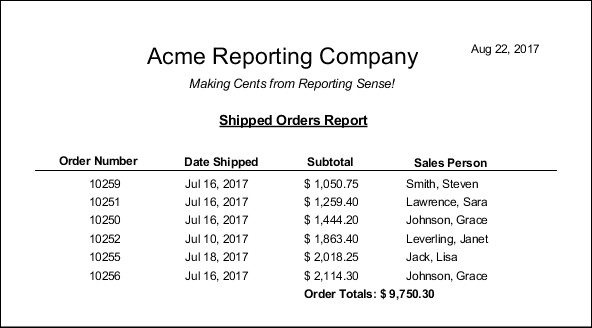Table Rows
Row Types
Rows are an important fundamental aspect of tables. There are three types of table rows: Header, Details, and Summary. The different types of rows can be independently enabled for each level of Grouping, and for each table in a Table Group. Adding or removing the Header, Details, or Summary rows is as simple as selecting the Row boxes in the Configure Table tab of the Property Inspector. A row can also be structured or unstructured. A structured row having a variable number of columns, and unstructured row having no columns so you can add images, charts, data, and text shapes anywhere in the row. Additionally, Table Row Versioning gives you the option of conditionally displaying rows with a different format to make them stand out.
To learn more about Tables, go to Report Tables and Table in the Appendix.
Header Row
The Header Row allows for a single row to be placed before the Details rows. This is commonly used to create a header for the Table. In many cases where one header is used, the other header could be used equivalently in its place. An interesting feature of the header row is the Reprint When Wrapped property which allows the header row to be reprinted on a new page when its data crosses a page boundary. To disable this feature, uncheck the Print When Wrapped property in the Properties tab.
Automatic Text Resizing
Detail Rows
The Detail Rows typically represent the majority of the data on a table or commonly referred to as the "middle" rows. Once you configure the Detail rows with your datasource, the table displays your data in a structured, repetitious format. You can customize the layout and organize the data to determine how you want your data to look on the report. You can even disable Detail Rows in unusual situations such as only displaying aggregate summaries.
Summary Row
The Summary Row is like the Header row only it prints at the bottom of the table, and is typically used to display aggregates for keys. They are typically used in conjunction with some of the Show Calculation keys, such as count, total, running total, etc.
Configuring Header, Details, and Summary Rows
Adding Header, Details, and Summary Rows is super easy. Once a Table component is in your Design Panel and your Datasource is populated in the Data Key field, check the Header and Summary boxes. The Header, Details, and Summary rows will be added to your report. The Details box will be checked by default. To remove the Header, Details, or Summary rows, uncheck the applicable rows.
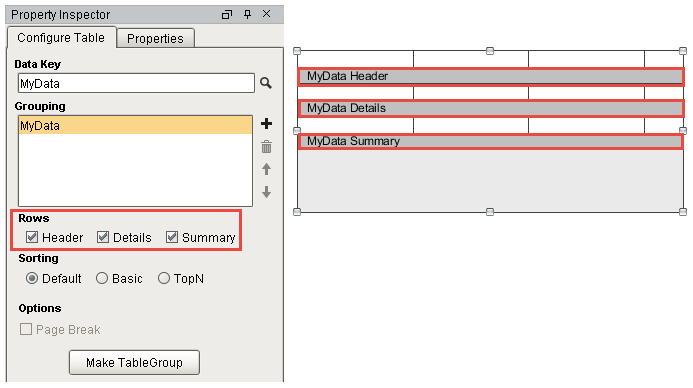
Structured vs Unstructured Rows
Structured Rows behave like a row in a spreadsheet: a series of columns are horizontally adjacent to each other. In the case of a row, the columns are Text Shapes. A structured row can have a variable number of Text Shapes. Structured rows provide more control over the layout, wrapping, and organization of text based table data. Since structured rows only allow for Text Shapes, they can not contain components like images, barcodes, charts, and text shapes.
To view the properties of the Details row (or any row), super-select the row by clicking on the Details row (dark bar in the table), or clicking the Details node in the Project Browser tree. You can confirm that a row is structured by looking at the Structured Columns property in the Properties Tab, or by looking at the Row Structure icon next to the Standard row version label. You can also change the number of columns in a row, using the Column Count property.
You can tell when a row (any row) is selected by looking at the Project Browser tree, or by looking at the red outline of the rows in a table. A row's content is above its respective dark row bar.
Unstructured Rows are functionally very similar to structured rows, but they do not offer the same column based text constraints. Instead, Unstructured Rows allow you to place any other report component inside of the row. Unstructured rows are highly customizable rows allowing you to place data, text shapes, images, or charts anywhere you want them within the row.
There are two ways to make a row unstructured once your row is selected:
- In the Property Tab of the Property Inspector, set the Structured Columns property to 'false'.
- In your Table, click on the Row Structure icon
on the right side of you row. Click the icon to make the row unstructured
. You can toggle the Row Structure icon to switch between a structured row and unstructured row.
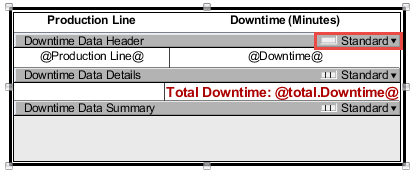
Now that the Header row is unstructured, drag the Header row down the page making room to add any component(s) from the Report Design Palette, and place it anywhere in the row. In this example, you can see a Text Shape was added for the report title, an image was dragged from the Image Management Tool, and a Line Shape was drawn to separate the image from the report data.
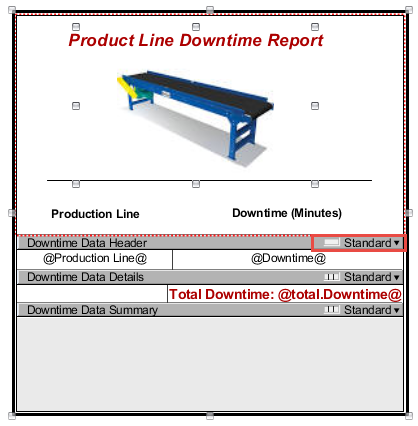
Here is what the report looks like in the Preview panel.
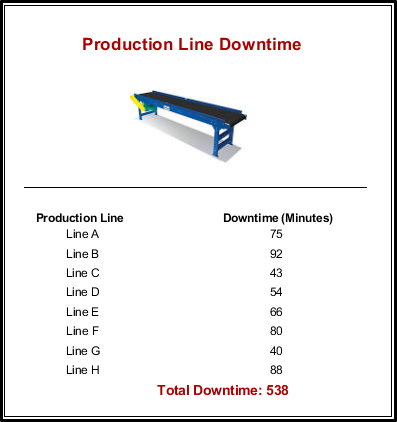
Report Data Configuration
In addition to configuring rows, you can also configure how you want your data to appear in a report using the Sort and Filter functions in the Table component.
Sorting
Sorting orders your data by a single data key or list of data keys. There are three types of Sorting in Tables.
- Default - data is sorted based on the order in which it is retrieved.
- Basic - takes a list of data keys and sorts by the first one. If the sort results in a tie, the tie will be resolved by the next data key in the list, and so on.
- TopN - uses a single key path, with a Count value that allows a limit to the number of rows that are processed.
Basic and TopN sorts can be configured for either ascending () or descending (
) sorts. They can also utilize aggregate (calculation) keys.
The TopN sort option, Include Others
if selected, will include all values outside of the specified Count range by compressing them into a single row.
Sort and Filter Examples
The CSV dataset containing all the data and the table used for the following Sort and Filter examples are shown below.
Dataset
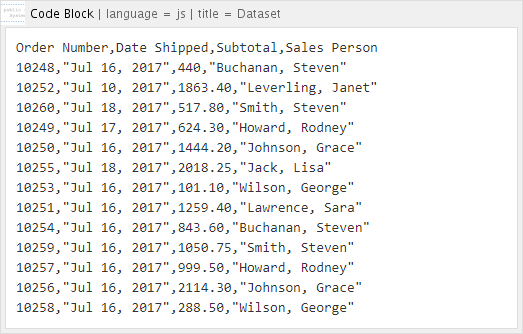
Table in the Design Panel
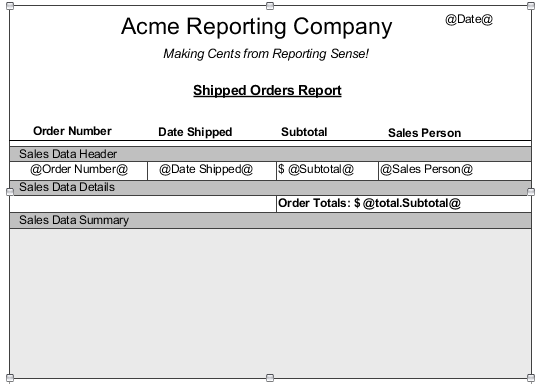
Default Sort Example
The data for the Default sort is retrieved directly as-is from the dataset. No sort order is applied.
Configure Table
Default Sort Results

Basic Sort Example
This table was sorted by the Order Number data key in ascending order. To sort in decending order, right-click on the Order Number and select Sort Descending.
Configure Table
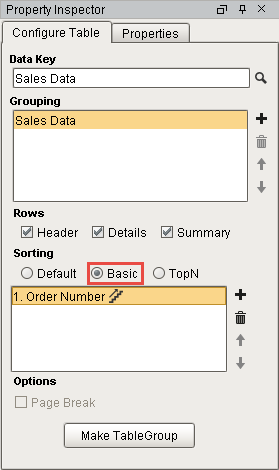
Basic Sort Results
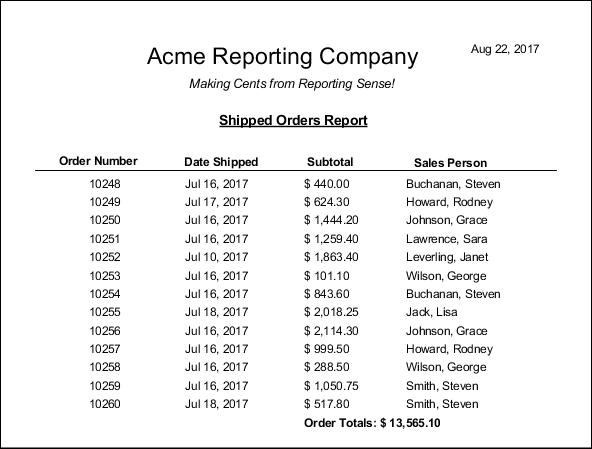
TopN Sort Example
This table was sorted by the Subtotal data key in ascending order with a Count value of 10 rows. To sort in decending order, click the Ascending icon next to the Data Key to switch to Sort Descending.
Configure Table
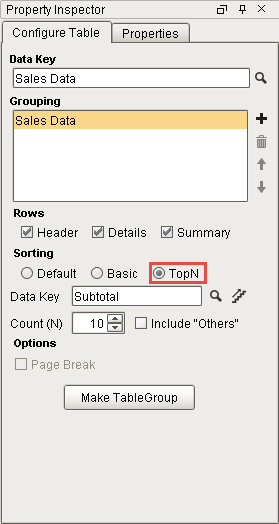
TopN Sort Results
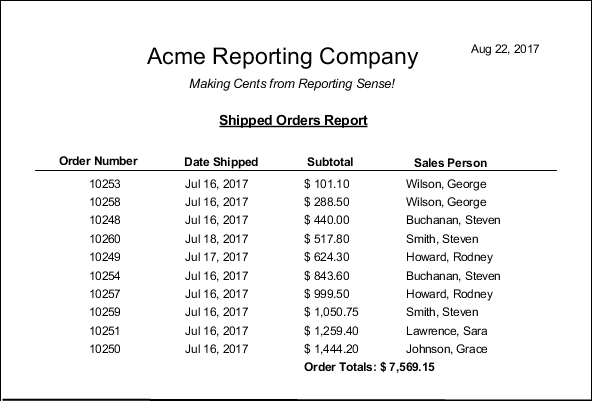
Filtering
Filtering gives the option of processing data based on an expression. The Filter Key property can be found in the Property Inspector under the Properties tab.
Once you enter your expression in the Filter Key field, hit return to commit your expression. If the expression resolves to 'false', the row will be skipped.
Filtering Example
This example is sorted in ascending order using the Subtotal data key, and filtered for any 'Subtotal>1000'. To alternate to descending order, click the Ascending icon () to toggle to a descending sort.
Configure Table & Property Tab
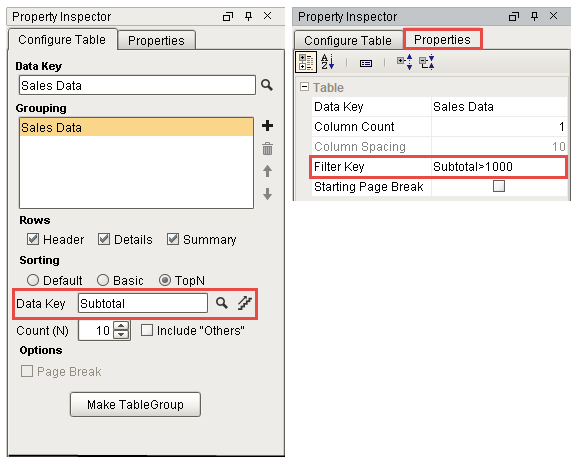
Filtering Results
